|
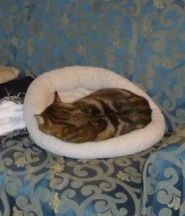 Dwight Peck's personal website Dwight Peck's personal website
Two weeks in Piemonte and Tuscany
in northwest Italy's worst weather in yonks
You may not find this terribly rewarding unless you're included here, so this is a good time for casual and random browsers to turn back before they get too caught up in the sweep and majesty of the proceedings and can't let go.
We wanted to visit Lucca and environs, and did so, but now our time is running out
Lucca 5: Basilica di San Frediano
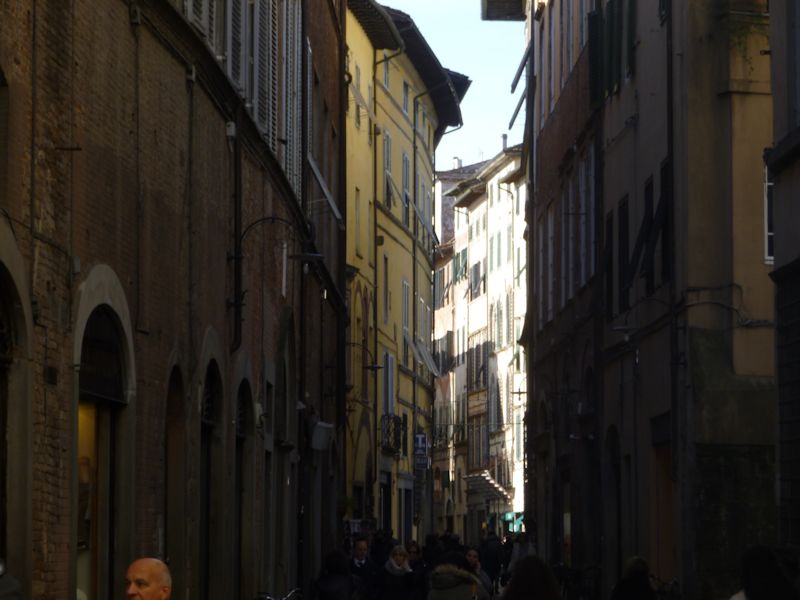
All week we've been pacing back and forth in front of the Basilica of San Frediano, between our flat at the northern end of the walled city and the free carpark outside the walls, so now we'll have a look at it.
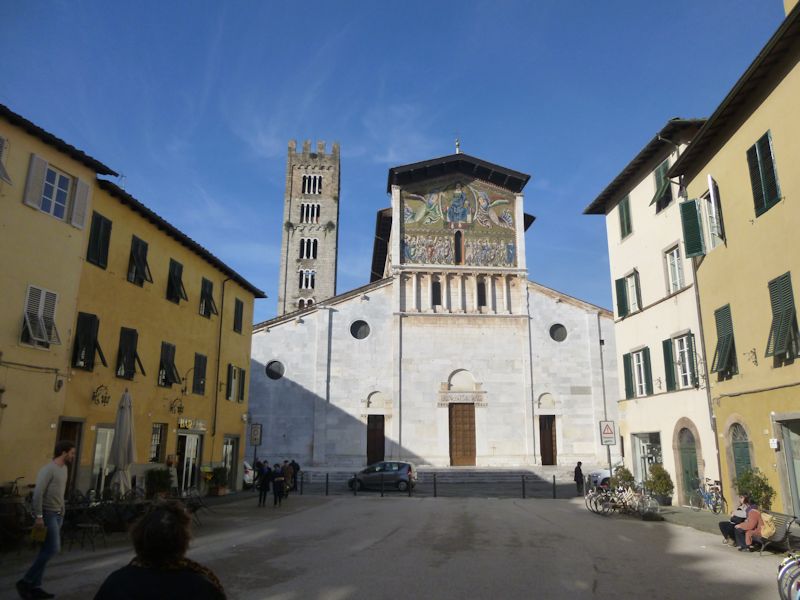
San Frediano, or Fridianus if you prefer, or even Frigianu, was said to have been an Irish "prince" from Ulster who wandered down to the hills above Lucca to live the life of a hermit. In about 560, however, Pope John II talked him into becoming the Bishop of Lucca, and he built a church on this spot dedicated to St Vincent at first, but later, when he was buried here, to himself.

The church was expanded into a Roman-style basilica in the years 1112-1147, but this fabulous Byzantine-style gold mosaic, representing Christ's ascension in an almond-shaped vehicle, was evidently made by Berlinghiero of Lucca in the 1230s. We're told that the Madonna was mixing with the apostles, there in the centre, but when that lancet window needed to be put in, she had to go.

The nave with two side aisles, with a wonderful Romanesque simplicity, with arches supported by columns ripped off from the Roman amphitheatre down the street.
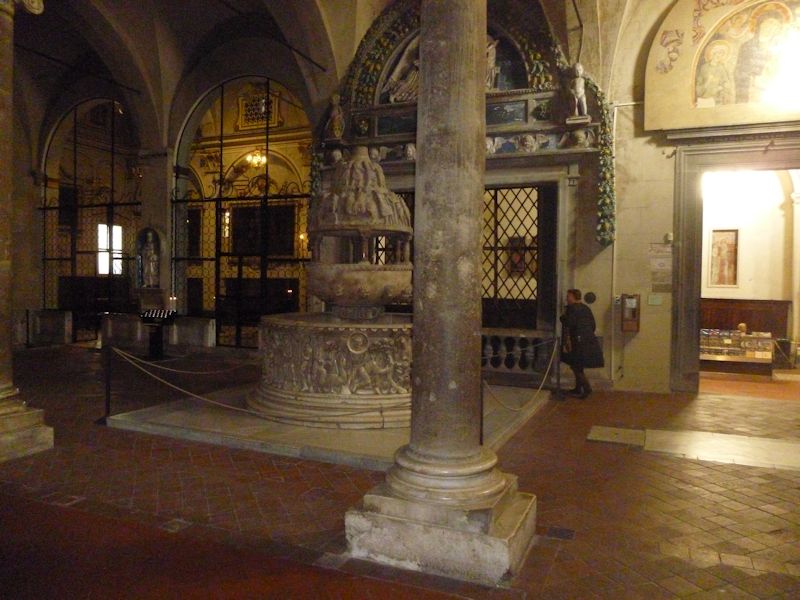
Just inside the door on the right, this is the 12th century Romanesque baptismal font and, behind Kristin, the chapel of St Zita of Lucca (1218-1278, or 1212-1272, pick one), patron saint of domestic servants, with her peaceful mummy therein. As a lifelong maid in the brutal Fatinelli household, she was always smiling and gave things to the poor, so following approximately 150 miracles after her death she was venerated throughout Europe and became a saint in 1696.
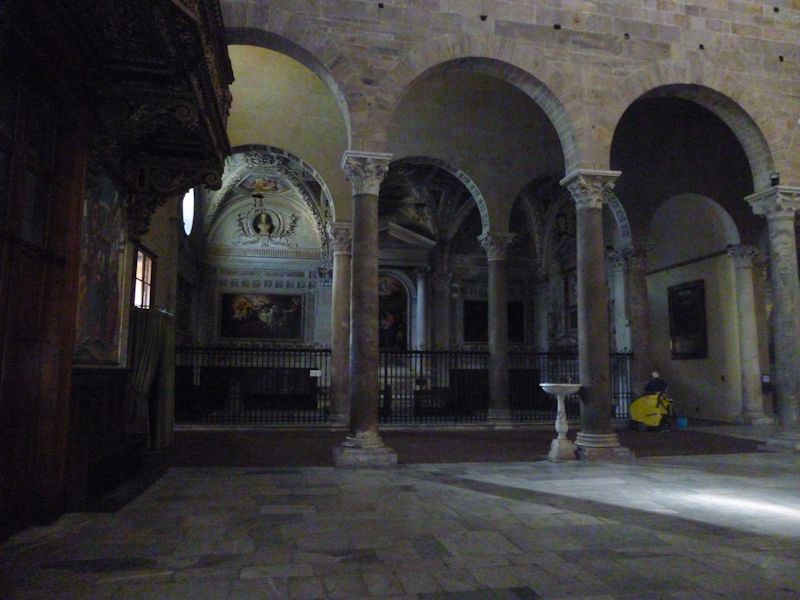
A side chapel just inside the front door on the left, with a baptismal font

The raised presbytery and altar, the ambo or pulpit on the right
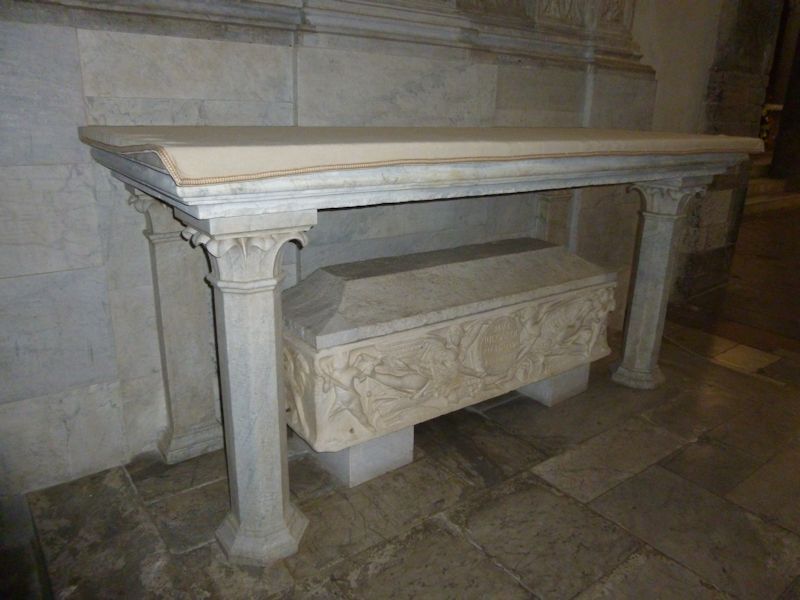
In the Trenta chapel, the Roman sarcophagus of St Richard the Pilgrim, called the 'King of Wessex', who died in Lucca in 722 on a pilgrimage to Rome. He happened also to be the father of at least three additional Anglo-Saxon saints. He was probably venerated, too.
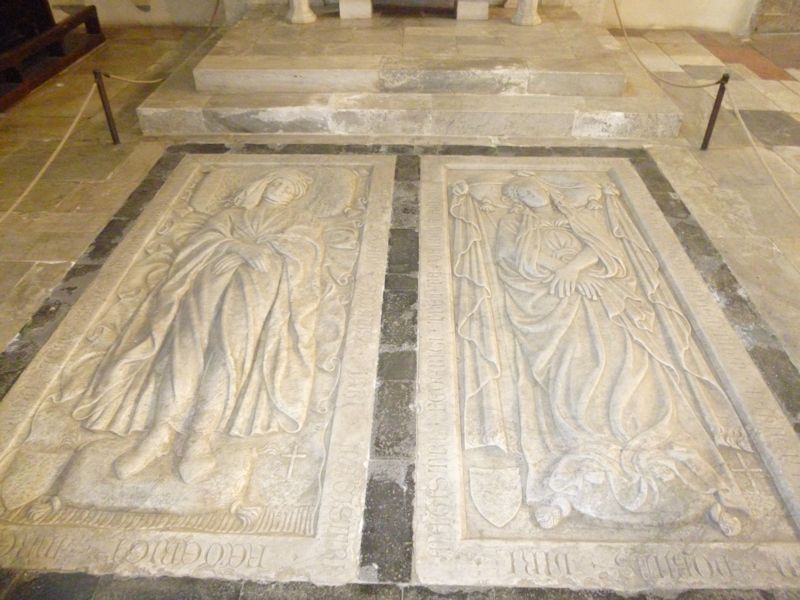
Also in the Trenta family chapel, Jacopo della Quercia made these fine slab tombs of the merchant Lorenzo Trenta and his wife, Isabetta Onesti, in about 1416. It was he who had, in 1406, made the beautiful tomb of Ilaria, young wife of Paolo Guinigi, in the Cathedral of Lucca.
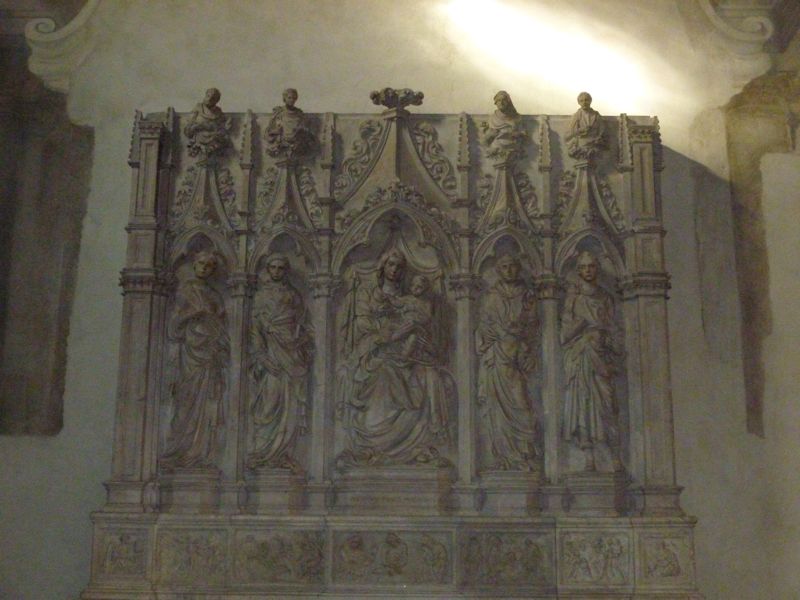
Something else interesting, I can't recall what
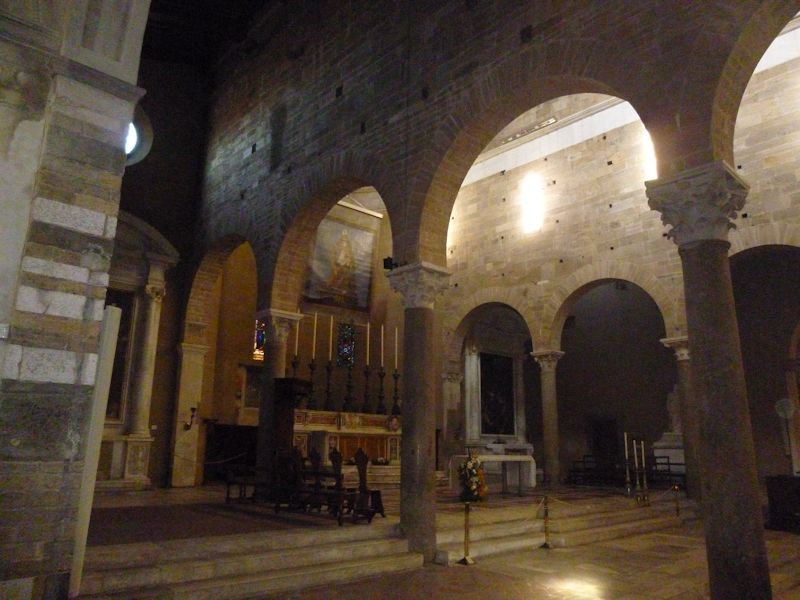
The raised prebytery and the altar (under which, by the way, St Frediano enjoys his eternal nap)

One of St Fridianus's many saintifying miracles was rerouting the course of the River Serchio, which was frequently flooding and discomfitting the citizens. He took a rake (see above) and commanded the river to follow where he indicated with the rake, and supposedly it did. This fresco by Amico Aspertini, ca. 1509, however, in the Chapel of the Cross, makes the job look a lot more complicated than that.

I have no notes on what this is, but it's very nice.

Kristin and St Fred's Basilica
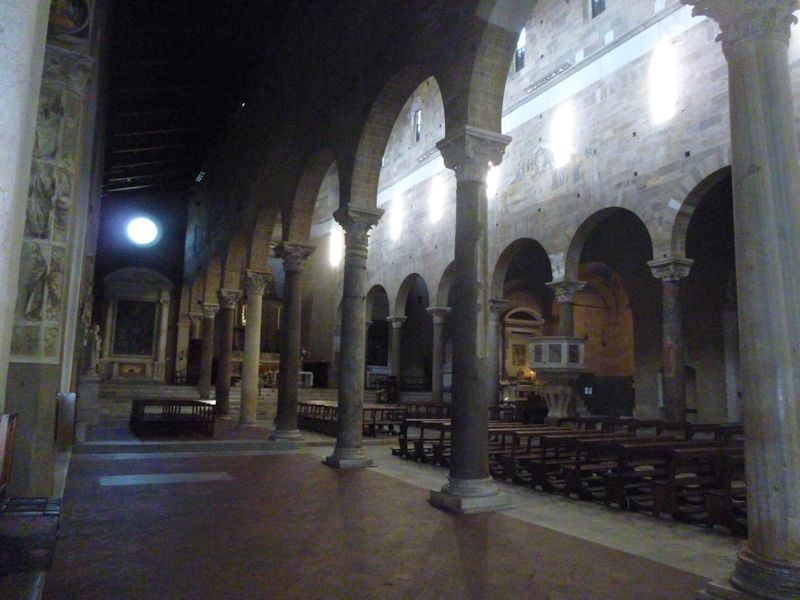
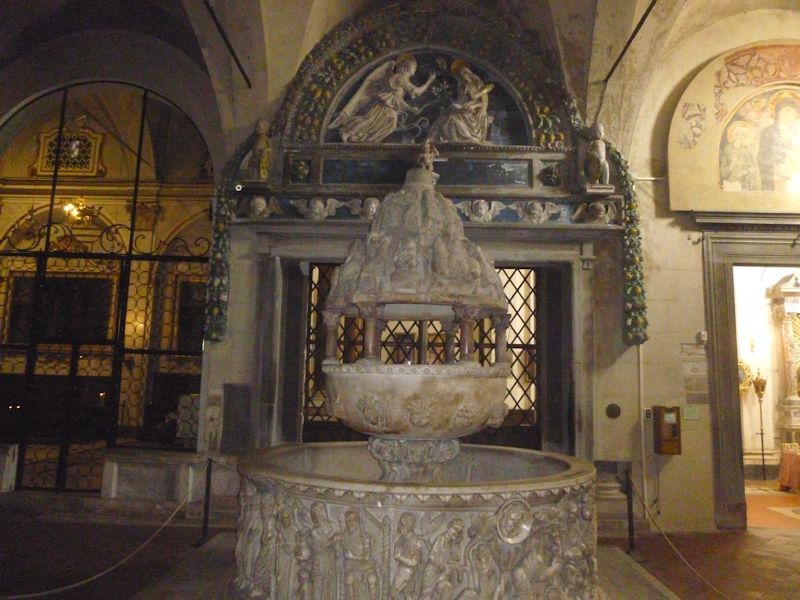
Once again, the 12th century baptismal font, with a tempietto (or tiny temple) on pillars, inside the basin. The story of Moses decorates the basin. A gentleman named Master Roberto has signed the whole work. The terra cotta Annunciation in Zita's lunette above the font is one of two either by Andrea della Robbia or by someone from the family studio.

Another font, this still in use, was carved in 1489 from an altar by Lucca's Matteo Civitali.
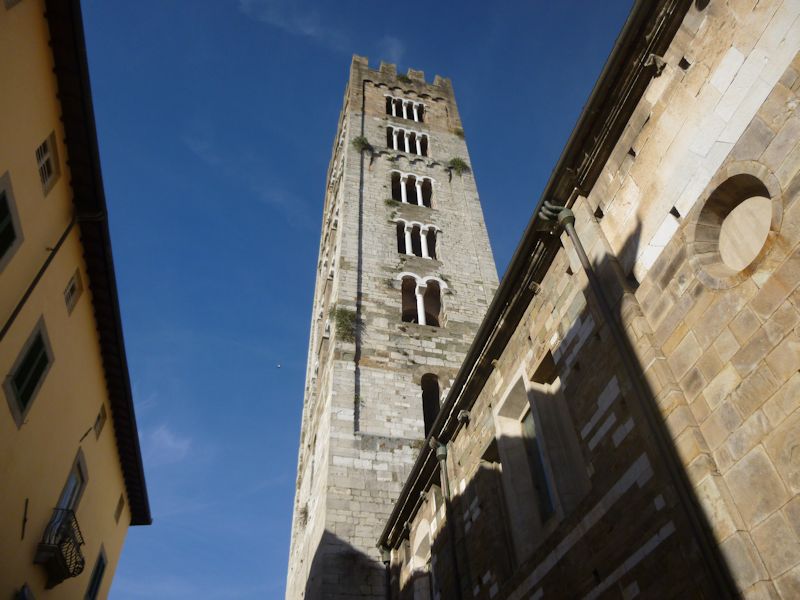
The huge belltower or campanile, with more and more windows as you go up, alongside the apse at the back of the church
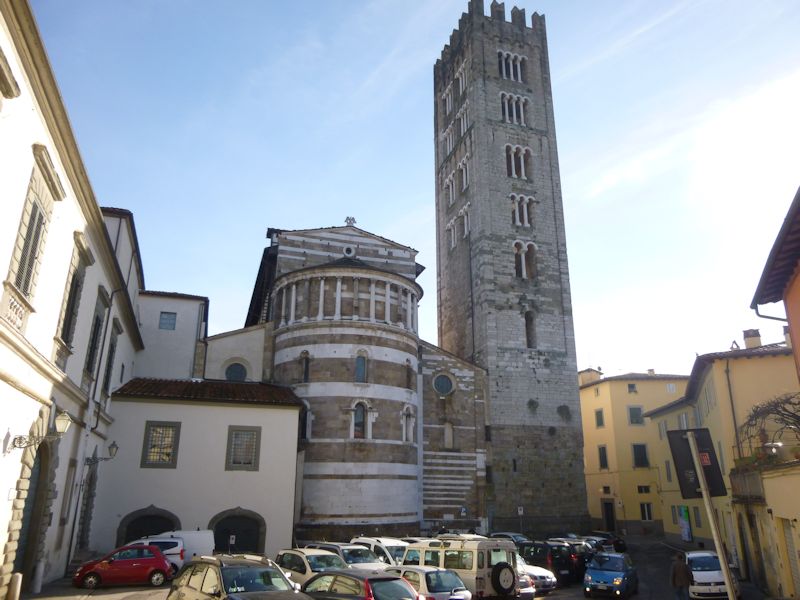
San Frediano's apse and campanile -- apparently the tower was originally connected to the entrance, as would be expected, but the church had to be re-oriented back-to-front during the 12th century renovations and additions because the circle of city walls that was being built at the same time cut too closely across the then entrance.
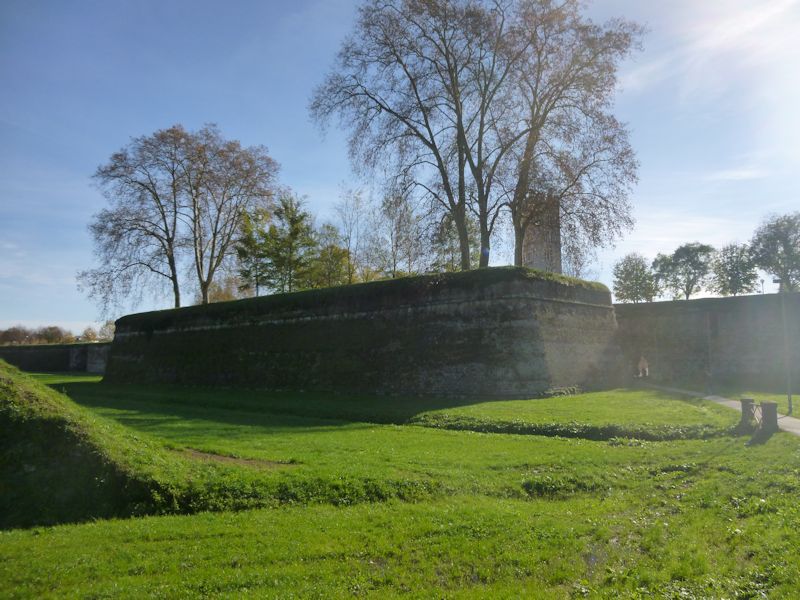
The platform covering the San Frediano footpath to the northern suburbs (and our free carpark), with the campanile behind
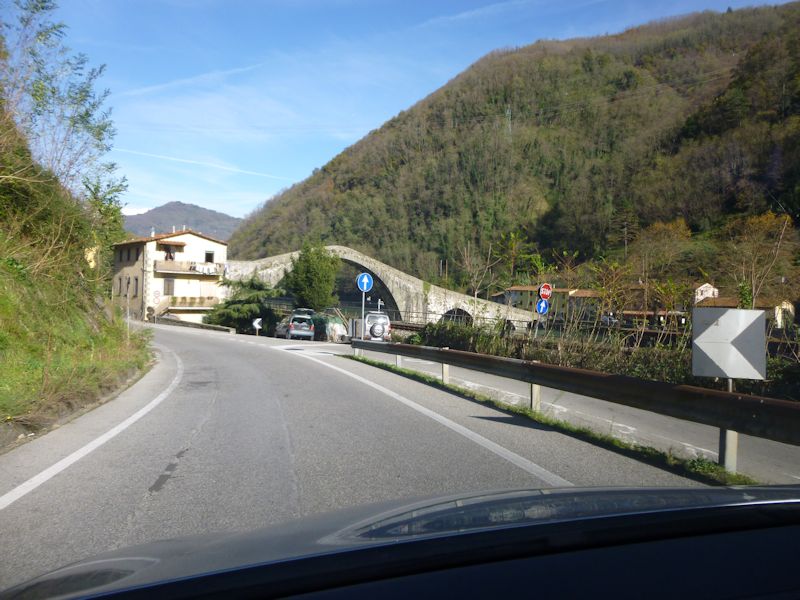
A stretching-the-legs sort of scenic drive northward up the Garfagnana valley towards the headwaters of the River Serchio -- the mountainous valley, and its principal towns like Barga and Castelnuovo di Garfagnana, were incorporated into the Republic of Lucca in the mid-13th century, but it was subsequently owned by the Este family of Ferrara and eventually by the Duchy of Modena.
This is the Magdalene Bridge (Ponte della Maddalene, from a statue in the church) crossing the Serchio in Borgo a Mozzano -- also called the Devil's Bridge, because (like nearly every other old bridge in the world) the builder got the Devil to build it for him in return for the first soul to cross it when it was finished, and he tricked Old Nick by sending a dog across before any humans came along.

Back from the Garfagnana in the afternoon
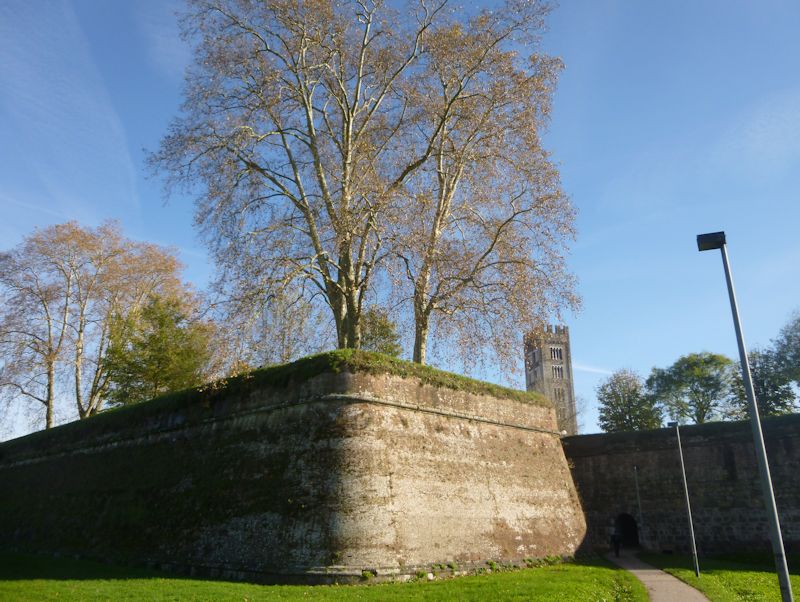
The Platform of San Frediano
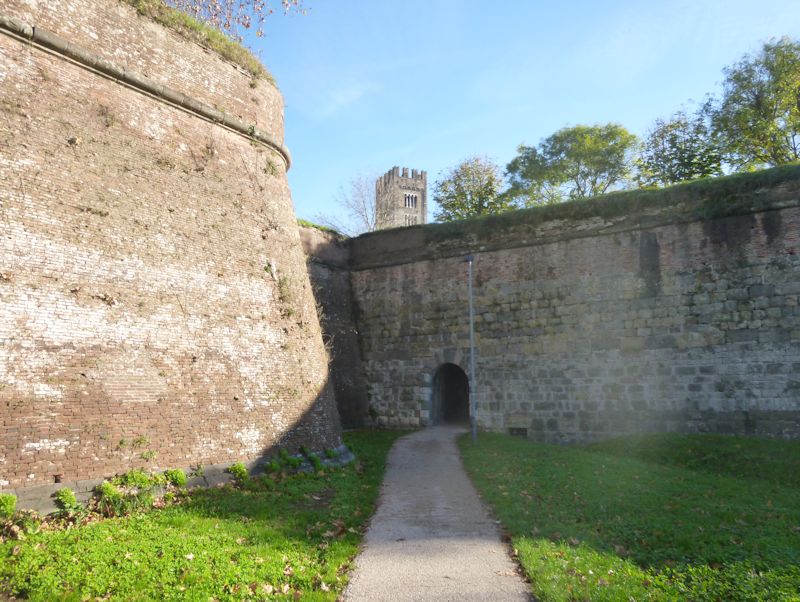
The Sortita (or Exit) of San Frediano

The Osteria Baralla -- we're sorry to be leaving
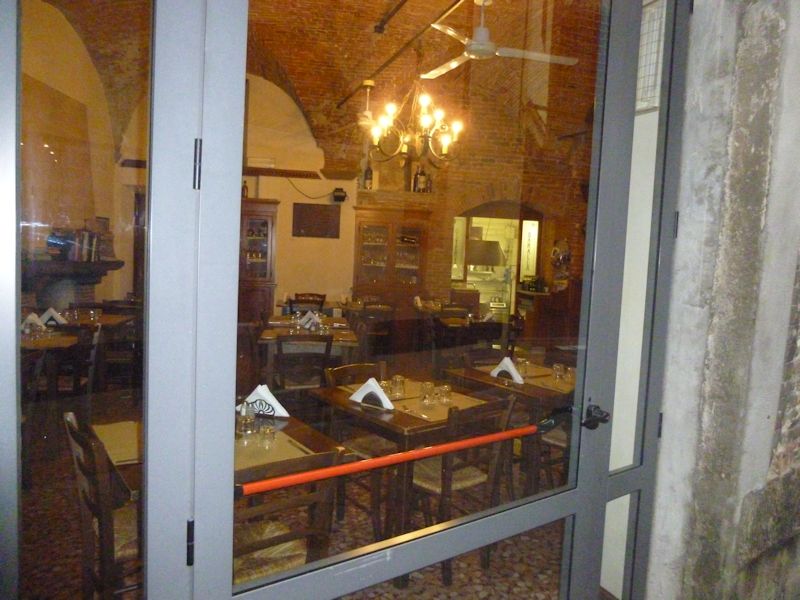
Baralla
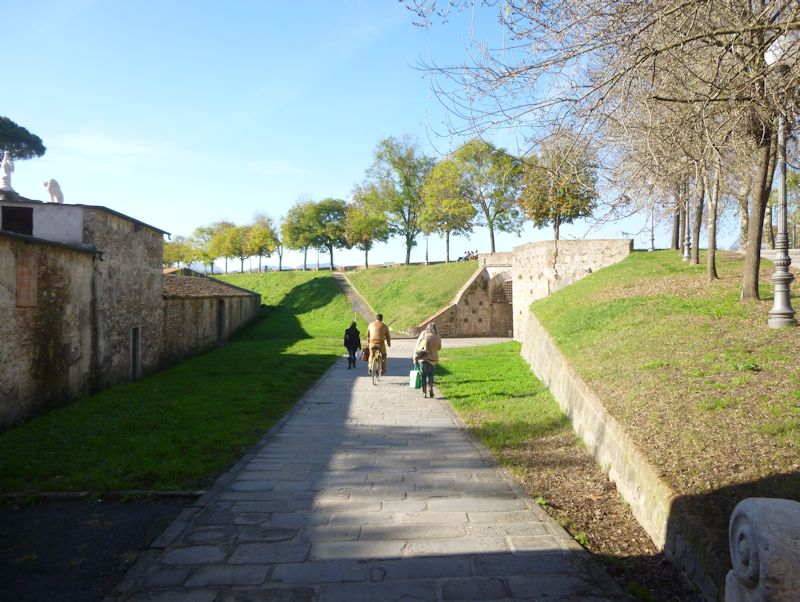
A final trek out through the city walls to the carpark. Whilst here, we've been able to visit Lucca, Pistoia, San Gimignano, Volterra, and Prato; next stop, Sillavengo!
       
     
 Bibliographic note: the best book I've seen in English on what may have been Lucca's height in the earlier part of the 14th century is Louis Green, Castruccio Castracani: a study on the origins and character of a fourteenth-century Italian despotism (Oxford, 1986) and on the dire later 14th century is Christine Meek, Lucca 1369-1400: politics and society in an early Renaissance city-state (Oxford, 1978). Bibliographic note: the best book I've seen in English on what may have been Lucca's height in the earlier part of the 14th century is Louis Green, Castruccio Castracani: a study on the origins and character of a fourteenth-century Italian despotism (Oxford, 1986) and on the dire later 14th century is Christine Meek, Lucca 1369-1400: politics and society in an early Renaissance city-state (Oxford, 1978).

 Feedback
and suggestions are welcome if positive, resented if negative, Feedback
and suggestions are welcome if positive, resented if negative,  .
All rights reserved, all wrongs avenged. Posted 14 January 2015. .
All rights reserved, all wrongs avenged. Posted 14 January 2015.
|
 Dwight Peck's personal website
Dwight Peck's personal website








































 Bibliographic note: the best book I've seen in English on what may have been Lucca's height in the earlier part of the 14th century is Louis Green, Castruccio Castracani: a study on the origins and character of a fourteenth-century Italian despotism (Oxford, 1986) and on the dire later 14th century is Christine Meek, Lucca 1369-1400: politics and society in an early Renaissance city-state (Oxford, 1978).
Bibliographic note: the best book I've seen in English on what may have been Lucca's height in the earlier part of the 14th century is Louis Green, Castruccio Castracani: a study on the origins and character of a fourteenth-century Italian despotism (Oxford, 1986) and on the dire later 14th century is Christine Meek, Lucca 1369-1400: politics and society in an early Renaissance city-state (Oxford, 1978).